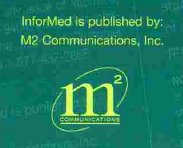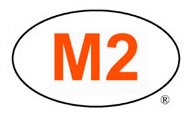CAFC Affirms TTAB Dismissal of "M2 COMMUNICATIONS" 2(d) Opposition
In a precedential ruling, the CAFC affirmed the TTAB's July 21, 2005 decision (here) dismissing a Section 2(d) opposition to registration of the mark M2 COMMUNICATIONS for "Interactive multimedia CD-ROMS containing educational information in the fields of pharmaceutical and medical product information, therapies, and strategies, and medical, pharmaceutical, and healthcare issues" [COMMUNICATIONS disclaimed]. (emphasis added by CAFC). M2 Software, Inc. v. M2 Communications, Inc., 78 USPQ2d 1944 (Fed. Cir. 2006) [precedential].

The Board found the mark not likely to cause confusion with the mark M2 SOFTWARE, registered for the following goods:
computer software featuring business management applications for the film and music industries; and interactive multimedia applications for entertainment, education and information, in the nature of artists' performances and biographical information from the film and music industries; and instructions and information for playing musical instruments. (emphasis added by CAFC).
The court noted that"paramount to this case is the industry-specific focus of the parties' claimed goods." The Board found the marks to be "very similar," but because of the unrelated nature of the goods and the lack of proof that the purchasers or channels of trade overlap, it dismissed the opposition.
Appellant/Opposer M2 Software challenged the Board's findings as to five duPont factors: the similarity of the goods, the channels of trade and purchasers, the similarity of the marks, the strength of the M2 SOFTWARE mark, and Applicant's intent.
The Board placed the greatest weight on its findings regarding the differences in the goods and in the channels of trade and purchasers. Because of the "dominant role that these factors play in this case," the CAFC found no error in the Board's weighting of the evidence.
As to the goods, Appellant/Opposer's feebly urged that the language "interactive multimedia applications for entertainment, education and information" appearing in its identification of goods covers interactive multimedia in any field. The court disagreed: "Such a reading would require us to improperly ignore scope limiting language within the clause it cites, i.e., language plainly limiting its registration to goods in the music and entertainment fields."

Moreover, the fact that the goods of both Opposer and Applicant take the form of interactive multimedia CD-ROMS is not a sufficient basis for finding the goods related: "it would be inappropriate to presume relatedness on the mere basis of goods being delivered in the same media format, especially where, as here, the goods described in both the application and registration are defined narrowly, along industry lines."
Finally, the court noted that M2 Software did not introduce any evidence that it actually sells goods or services beyond the music and entertainment fields, and so it had no common law rights that extend beyond the scope of its registration.
As to channels of trade and purchasers, neither party submitted evidence of "inherent overlap" between their respective fields. The fact that each operates a website "is insufficient to overcome the vast weight of evidence establishing that no overlap exists."
The du Pont factors that favored Opposer -- the similarity of the marks and the fanciful nature of the M2 SOFTWARE mark -- were outweighed by the unrelated nature of the goods and the different channels of trade and purchasers.
Accordingly, the CAFC affirmed the Board's ruling.
Text Copyright John L. Welch 2006.




0 Comments:
Post a Comment
<< Home